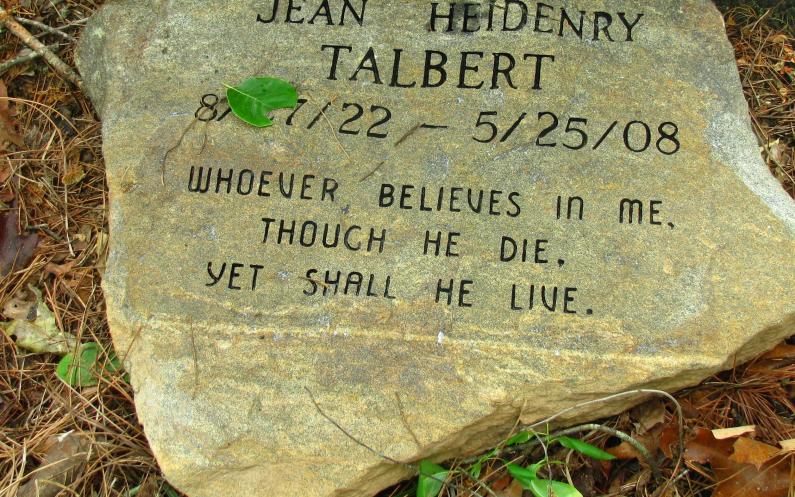
Ten Years in Glory
Ten years ago today my mother received a lavish entrance into the eternal kingdom of her Lord and Savior Jesus Christ (2 Pet 1:11). Fittingly, it was in the opening minutes of the Lord’s Day, and she was at home with family. Sixteen years of Alzheimer’s Disease concluded with sixteen days of taking no food or water. (Some might say that’s impossible; don’t you believe it.)
Two weeks of watching someone slowly pass away in your own home gives you a lot of time to reflect on life and death. Personally bathing and dressing the body for burial, laying it in a pine casket handcrafted by a fellow believer, lowering it into the ground in a forest with birds singing overhead, and then filling the grave–again, all done as a family—gave lots of opportunity for further contemplation.
Do Christians die? Jesus says, “No” (Jn 6:50-51). Repeatedly (Jn 8:51). Believers “will never die” (Jn 11:25-26). James remarks that the body without the spirit is dead; so, yes, our bodydies but we do not (Jas 2:26). Obviously believers’ bodies succumb to biological death and deterioration like anyone else’s. But for the believer, physical death is (as C. S. Lewis pictures it) the doorway through which we pass into the direct presence of God (2 Cor 5:8).
Five days before he was burned at the stake by Bloody Mary in 1555, the English reformer Rowland Taylor wrote to his family and friends, “Count me not dead, for I shall certainly live and never die” (J. C. Ryle, Five English Reformers, 83). Jesus’ statement to Martha in John 11 is insistent and unambiguous:
I am the resurrection, and the life. The one believing in me, if he should die, will live. And the one who lives and believes in me will never die.
His claim is absolute—resurrection and life are tied directly and exclusively to Him. If you want either, you can get them only from Him. And his follow-up question is pointed and personal:
Do you believe this?
My mother did. Correction: my mother does. She didn’t die ten years ago, not because she lives on metaphorically in our memories, or in the deeds she did, or the lives she touched. She changed locations. Or dimensions. Or however it is actually to be explained.
John Bunyan’s classic The Pilgrim’s Progress recounts the allegorical journey of Christian from the City of Destruction to the Celestial City. Bunyan’s description of the welcome that Christian and Hopeful received into heaven must capture some of the lavish entrance that Peter references.
Now while they were drawing towards the Gate, behold a company of the heavenly host came out to meet them . . . . There came out also at this time . . . several of the King’s trumpeters, clothed in white and shining raiment, who with loud and melodious noises made even the heavens to echo with their sound. These trumpeters saluted Christian and his fellow with ten thousand welcomes from the world; and this they did with shouting and sound of trumpet.
This done, they compassed them round on every side; some went before, some behind, and some on the right hand, and some on the left, continually sounding as they went with melodious noise . . . so that the very sight was to them that could behold it as if heaven itself was come down to meet them. . . . And as they walked ever and anon these trumpeters . . . by mixing their music with looks and gestures, signified to Christian and his brother how welcome they were into their company, and with what gladness they were come to meet them.
And now were these two men, as it were, in Heaven before they came at it, being swallowed up with the sight of angels and with hearing their melodious notes. Here also they had the City itself in view, and thought they heard all the bells therein ring to welcome them . . . .
Now I saw in my dream that these two men were in at the Gate . . . . Then I heard in my dream that all the bells in the City rang for joy, and it was said to them, Enter into the joy of your Lord.
Now just as the Gates were opened to let in the men, I looked after them . . . . which when I had seen, I wished myself among them.
What have those ten years in glory been like for my mother? And what is my mother like after ten years in glory?

